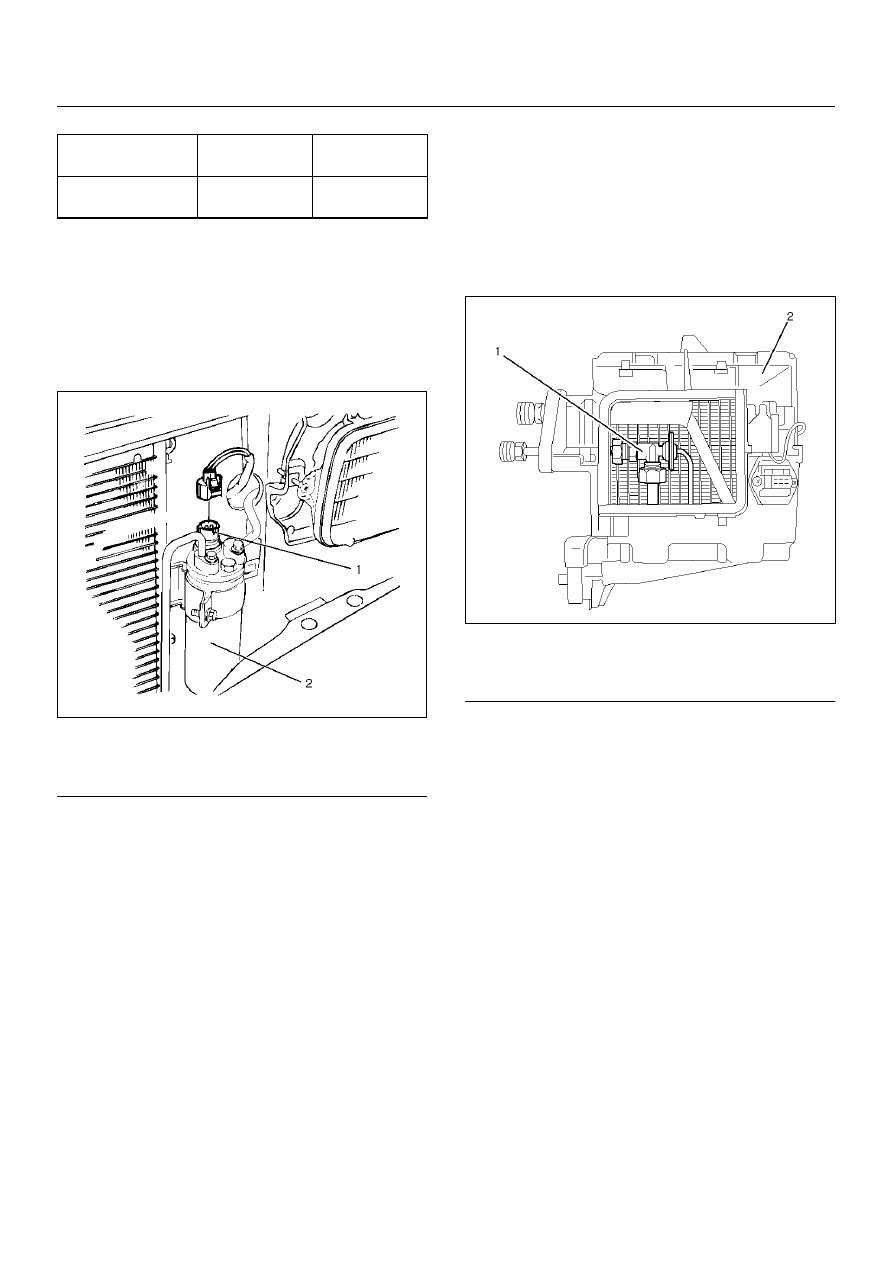Opel Frontera UE. Manual - part 15

1A–32
HEATING, VENTILATION AND AIR CONDITIONING (HVAC)
Pressure Sensor
The pressure sensor is installed on the upper part of the
receiver/drier. This sensor converts high pressure
detection of refrigerant to an electrical voltage signal
and supplies it to the PCM. The PCM controls switching
compressor idle speed and cooling fan operation by the
electrical voltage signal.
875RX002
EndOFCallout
Expansion Valve
This expansion valve is an external pressure type and it
is installed at the evaporator intake port.
The expansion valve converts the high pressure liquid
refrigerant sent from the receiver/drier to a low pressure
liquid refrigerant by forcing it through a tiny port before
sending it to the evaporator.
This type of expansion valve consists of a temperature
sensor, diaphragm, ball valve, ball seat, spring
adjustment screw, etc.
The temperature sensor contacts the evaporator outlet
pipe, and converts changes in temperature to pressure.
It then transmits these to the top chamber of the
diaphragm.
The refrigerant pressure is transmitted to the
diaphragm's bottom chamber through the external
equalizing pressure tube.
The ball valve is connected to the diaphragm. The
opening angle of the expansion valve is determined by
the force acting on the diaphragm and the spring
pressure.
The expansion valve regulates the flow rate of the
refrigerant. Accordingly, when a malfunction occurs to
this expansion valve, both discharge and suction
pressure get low, resulting in insufficient cooling
capacity of the evaporator.
The calibration has been changed to match the
characteristics of HFC-134a.
874RX009
EndOFCallout
Evaporator
The evaporator cools and dehumidifies the air before
the air enters the passenger compartment.
High-pressure liquid refrigerant flows through the
expansion valve into the low-pressure area of the
evaporator. The heat in the air passing through the
evaporator core is lost to the cooler surface of the core,
thereby cooling the air.
As heat is lost between the air and the evaporator core
surface, moisture in the vehicle condenses on the
outside surface of the evaporator core and is drained off
as water.
When the evaporator malfunctions, the trouble will show
up as an inadequate supply of cool air. The cause is
typically a partially plugged core due to dirt, or a
malfunctioning blower motor.
The evaporator core with a laminate louver fin is a
single-sided tank type where only one tank is provided
under the core.
Condenser fan
ON
(kPa/psi)
OFF
(kPa/psi)
Medium-pressure
control
1471.0
±
98.1
(213.3
±
14.2)
1078.7
±
117.7
(156.4
±
17.1)
Legend
(1) Pressure Switch
(2) Receiver Drier
Legend
(1) Expansion Valve
(2) Evaporator Assembly